The story behind the infamous Snake Island and how so many of the deadliest predators ended up concentrated in the same place has been explained.
Brazil isn't short of tropical locations and islands, but Ilha de Queimada Grande, which is 90 miles off the coast of São Paulo is not one that you'd probably be looking to visit.
Locals know to steer clear of the area, and are likely thankful that the 106-acre island is so far out at sea, where approximately 4,000 highly venomous species of snake wait to feast on visiting animals.
Snake Island is known as one of the most dangerous islands in the world, and is considered too hazardous for humans, with visitation to the island prohibited by the Brazilian government and permission only granted to select researchers and scientists.
The dangerous yet critically endangered venomous golden lancehead inhabit the island, featuring a fatal venom that can kill humans within an hour after entering the bloodstream.
A YouTuber even managed to evade authorities and sneak his way onto the island in 2023, and luckily made it out alive without encountering any of the deadly predators.
He took a long boat ride and ventured to the famous lighthouse on the island, all while wearing some hard metal armour to protect himself from any attacks.
But why is the island so heavily populated with particularly dangerous snakes?
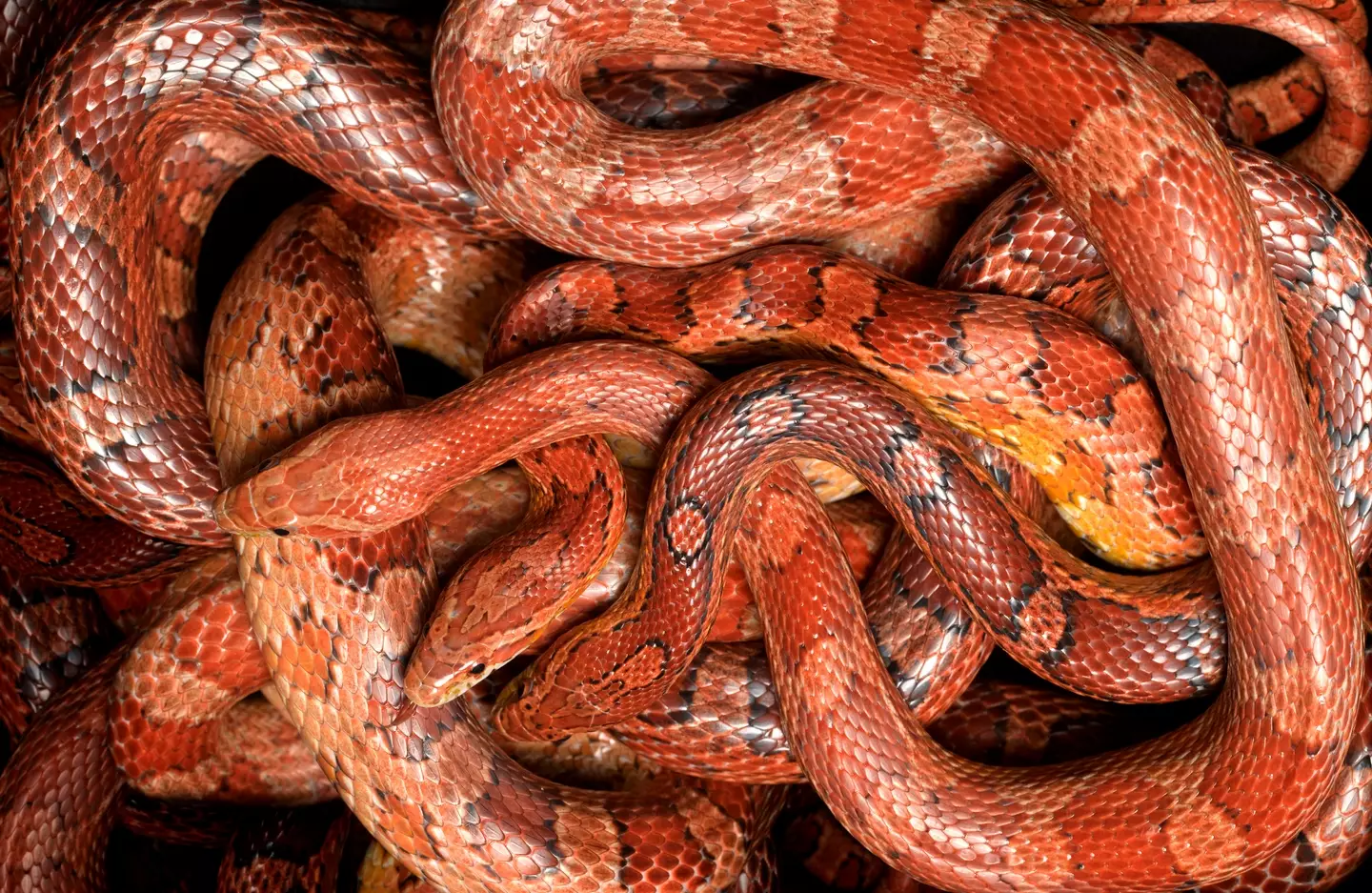 Snake Island is home to thousands of lethal snakes (Getty Stock Photo)
Snake Island is home to thousands of lethal snakes (Getty Stock Photo)
Golden lancehead vipers are one of the deadliest species of snakes in the world, so much so that nobody lives on the island anymore.
From 1909 to the 1920s, people did live there to run its lighthouse, but a tale tells that the last lighthouse keeper and his family were killed when a load of snakes made their way into their house through the windows.
But the reality of it is that Ilha de Queimada Grande's dense population of snakes started about 11,000 years ago, according to Smithsonian Magazine.
When sea levels rose to isolate the island from mainland Brazil, the snakes on the island, believed to be jararaca snakes, evolved differently to their mainland relatives.
This is because snakes left on the island had no ground level predators, so they they could reproduce rapidly, though having no predators meant they also had no ground level prey, so to eat, the snakes slithered upward and preyed on migratory birds that would seasonally visit the island.
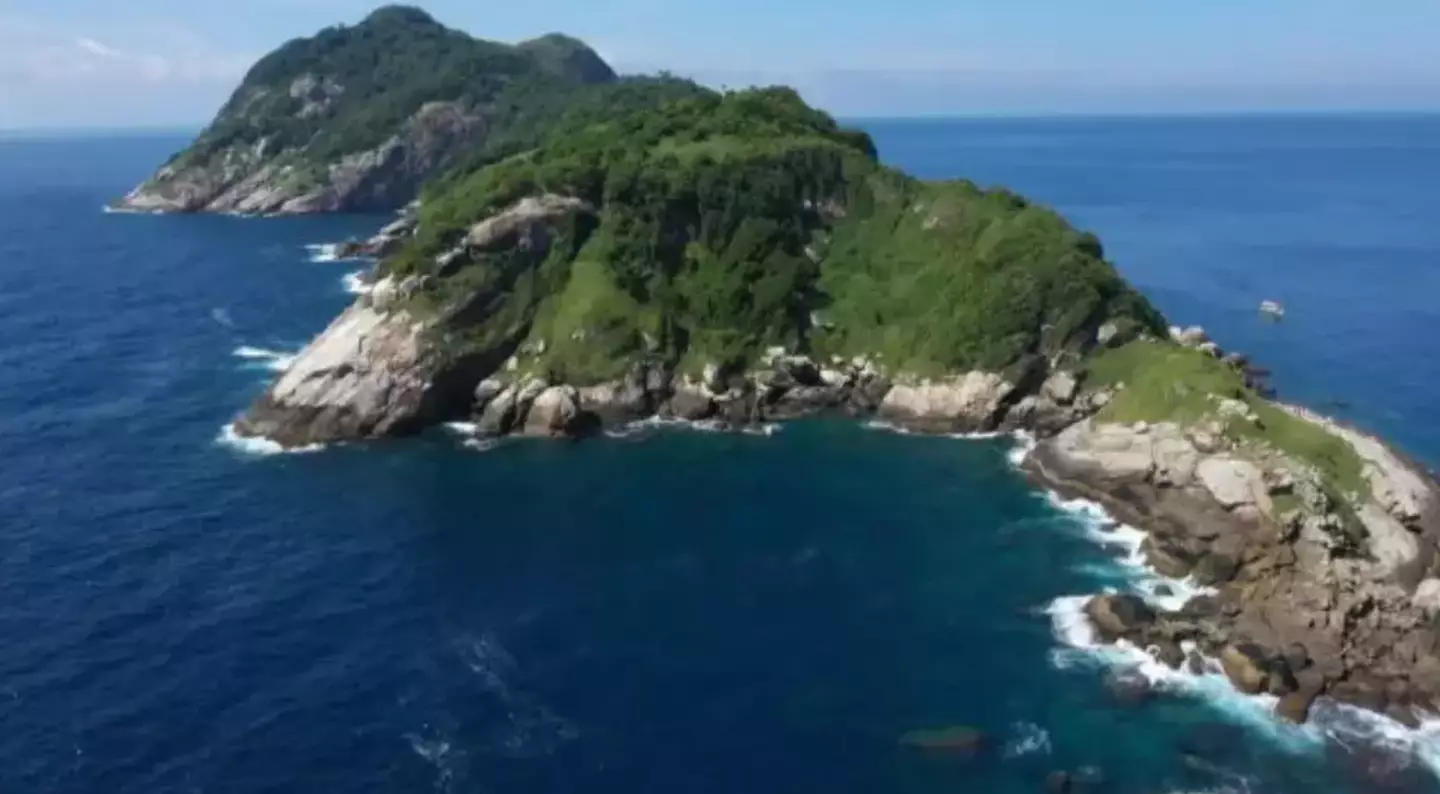 Snakes here have evolved to have some of the deadliest venom in the world (9 News)
Snakes here have evolved to have some of the deadliest venom in the world (9 News)
Usually, snakes stalk and then bite their prey, coming back after their venom had taken effect.
Golden lancehead vipers can't track birds, so their venom evolved to be very potent and efficient, estimated to be three to five times stronger than snakes on the mainland.
It is capable of killing prey almost instantly.
It is estimated that the island is so heavily populated with snakes that there's a snake for every square metre in certain areas, with a bite from a golden lancehead carrying a seven percent chance of death.
If it doesn't do that, it can cause kidney failure, necrosis of muscular tissue, brain hemorrhaging and intestinal bleeding.
So yeah, Snake Island is somewhere to steer clear of then.Featured Image Credit: Marinha do Brasil/Flickr/Creative Commons CC BY-SA 2.0 / Getty Stock Photos
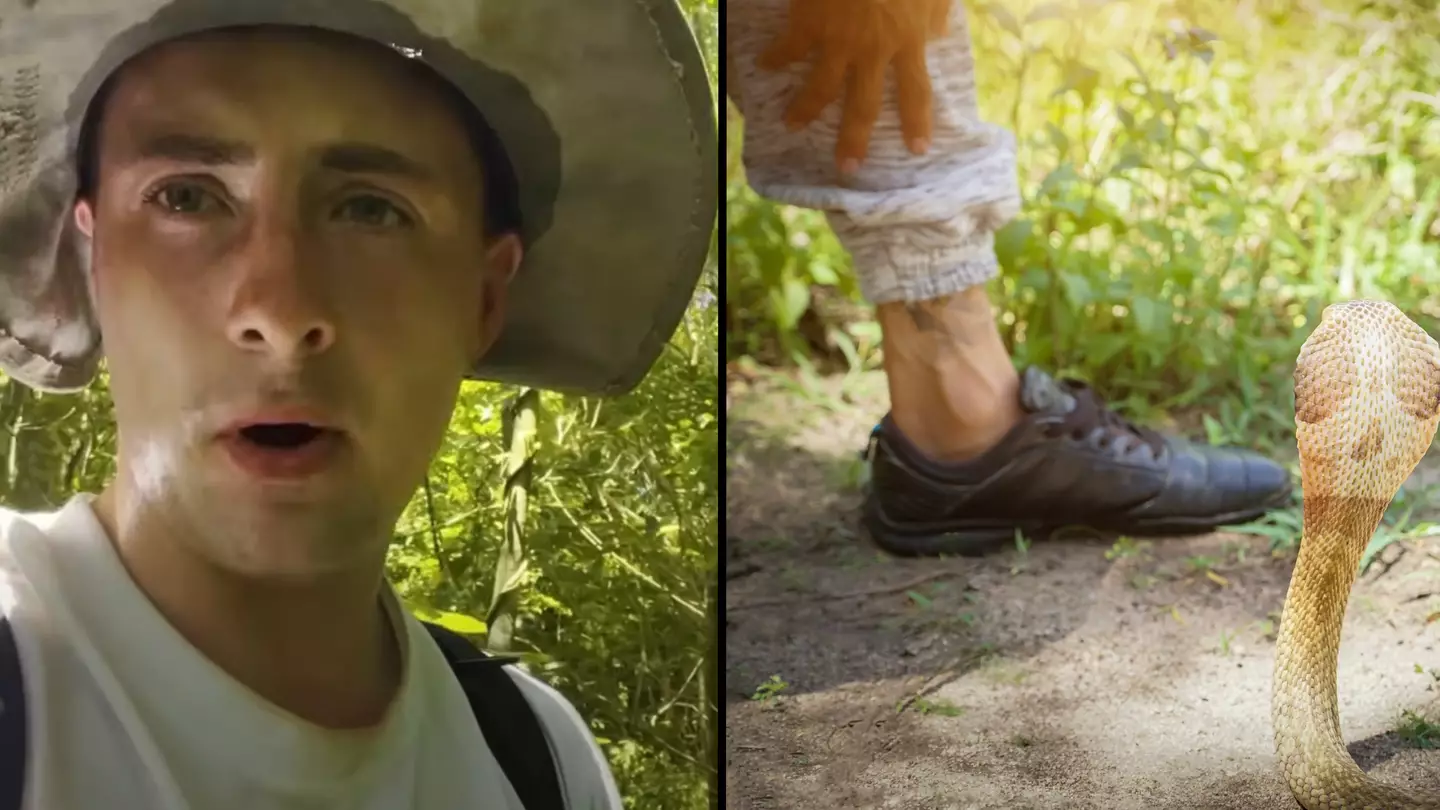
Updated 16:37 5 Sep 2024 GMT+1Published 12:30 5 Sep 2024 GMT+1
Man snuck onto Snake Island where no human is allowed to visit and is home to 4,000 of world’s deadliest snakes
The Brazilian island is off-limits for visitors
A man snuck onto 'one of the most dangerous island's in the world' which is strictly off-limits to tourists due to it's high concentration of venomous snakes.
Ilha da Queimada Grande, more commonly referred to as Snake Island, is located off the coast of São Paulo in Brazil and is considered too dangerous for humans.
Despite being just 106-acres in size, the island is home to an estimated 4,000 snakes, which includes the highly venomous golden lancehead. A critically endangered species, the lancehead has highly potent venom that can kill a human within an hour.
Take a look at footage captured from the island below:
Due to the island's number of highly venomous snakes it's no surprise that visiting Snake Island is forbidden, with the exception of researchers and scientists who have gained special permission.
The warnings haven't deterred brave (or reckless, you decide) travellers from attempting to visit, with one man even recording his trip for YouTube.
Infamous 'danger tourist' Lord Miles - real name Miles Routledge - thought the perilous journey to Snake Island would make seriously good content and decided to try his luck.
Getting to the island was no easy feat, with Miles and his team having to evade the Brazilian coast guard before even arriving.
Once he made landfall, Miles wasted no time in embarking on a jungle route up to an abandoned lighthouse, which he called one of the 'most dangerous' on the island.
Thankfully Miles decided to bring some form of protective gear - medieval inspired armour of course - before saying a prayer and setting off to meet his fate.
"This isn't clickbait, I'm on one of the most dangerous island in the world," he told the camera.
"Many have been to this island and very few have gotten out unfortunately."
The journey to the lighthouse, where locals allege that the occupants inside died from snake bites, saw Miles trudging through overgrown grass.
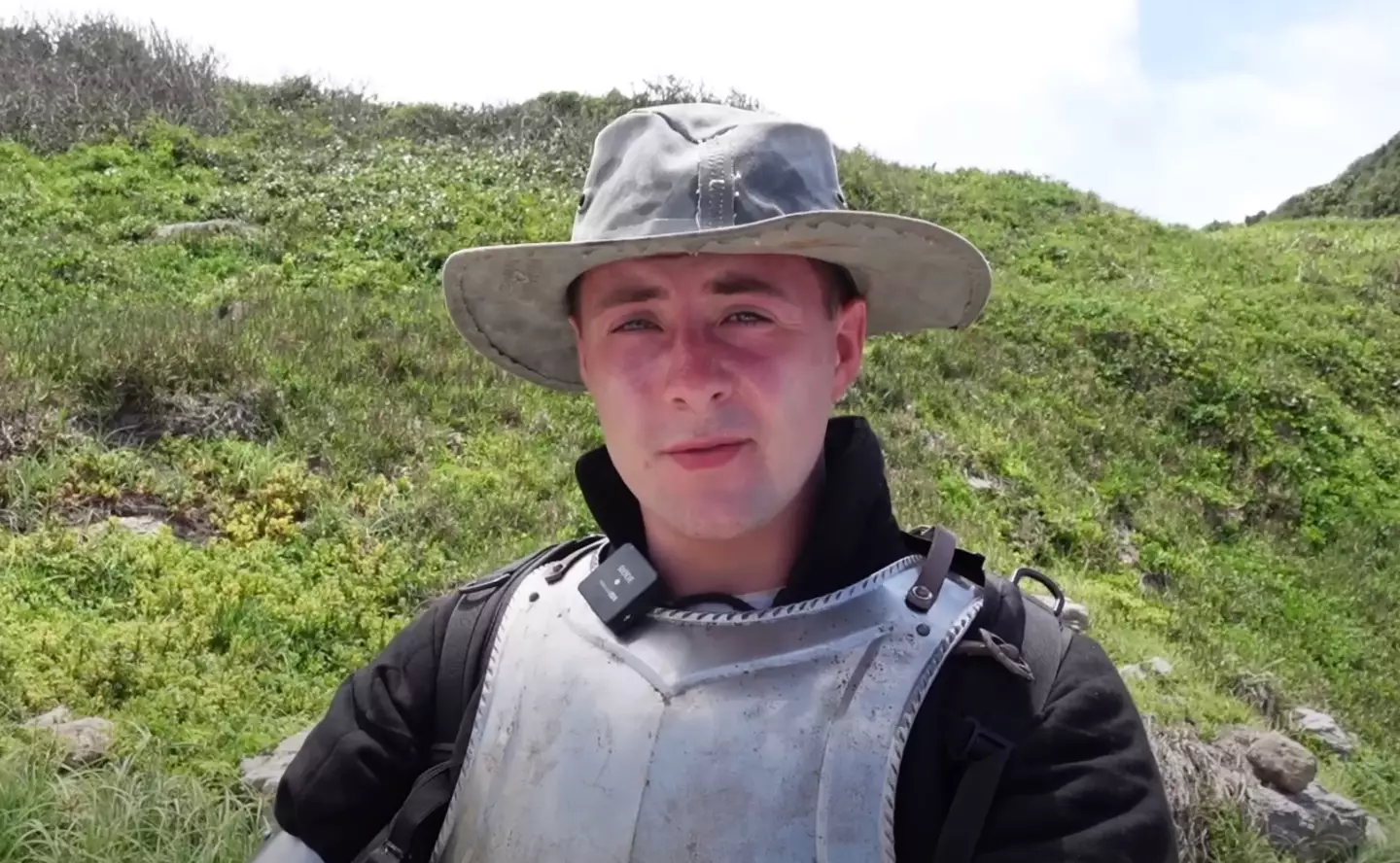
Despite the island's notorious reputation, Miles encountered very few snakes on his journey. In-fact it seemed like he was more at risk of suffering from dehydration rather than a snake bite.
"It's not that bad, for the second most dangerous island in the world," he told the camera at one point.
Fortunately luck also seemed to be on Miles' side as he managed to make it off the island alive - but don't take that as an invitation to visit the island for yourself.Featured Image Credit: (YouTube/Lord Miles Getty Stock Photo)
.png)
Published 16:22 20 Feb 2024 GMT
Snake Island is home to 4,000 of world’s deadliest snakes and no human is allowed to visit
The snakes' venom can kill a person within an hour
The idea of visiting an island full of your favourite pet animals seems like a dream to be honest.
You know, like ‘puppy island’ or ‘bunny island’... that would be cute right?
Except this real spot nicknamed Snake Island is so deadly no human is ever allowed to visit.
Queimada Grande might only have an area of 106 acres, but it's home to around 4,000 snakes – the equivalent of between three and five of the things per square metre.
And they’re not just harmless grass snakes like we have in the UK or the kind you’d want to hold around your neck like Britney Spears, they’re golden lancehead vipers.
Sounds scary, right?
Critically endangered, the snake is one of the most venous snakes in the world.
The golden lancehead only lives on Snake Island, about 30 miles off the coast of Brazil.
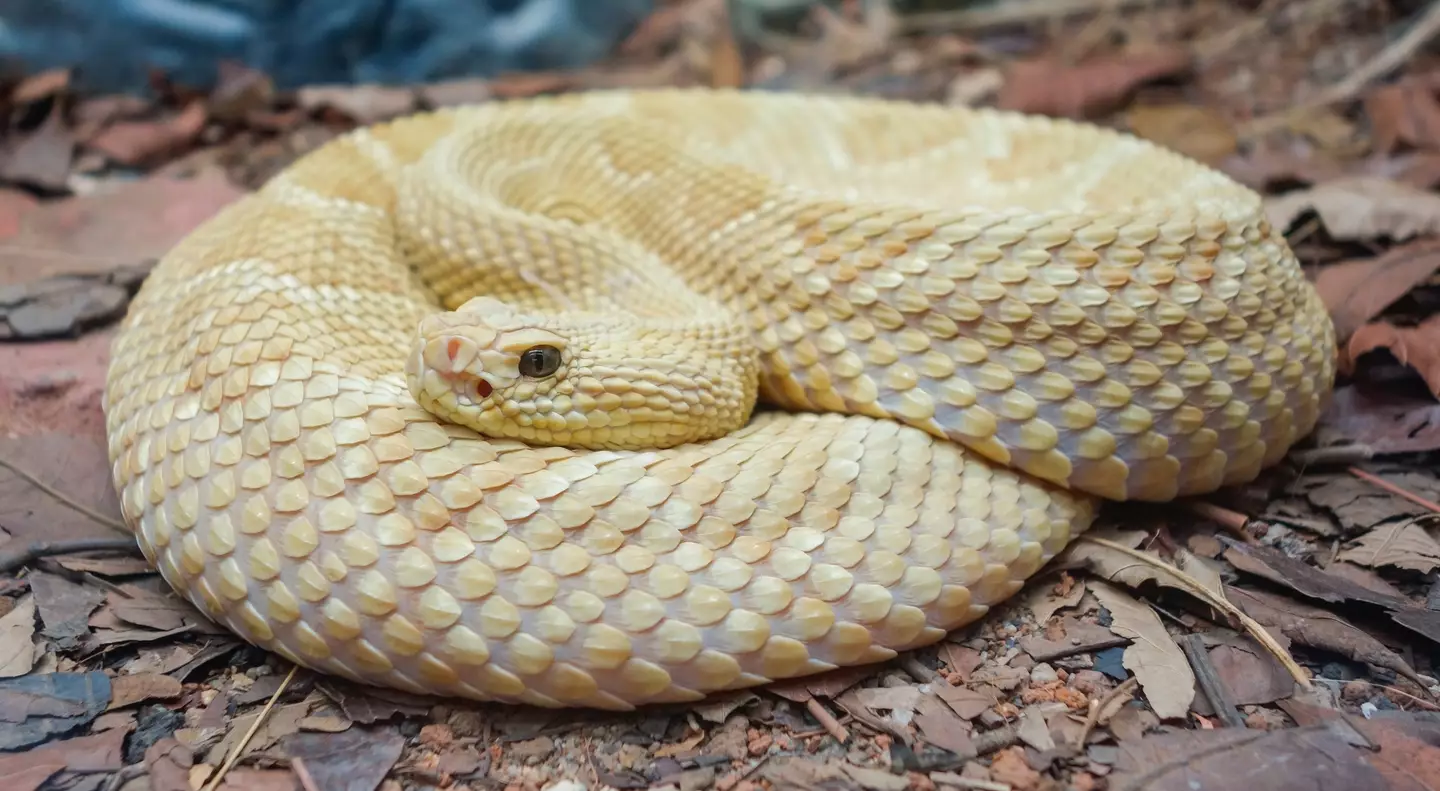
Brazil isn't short of tropical locations and islands, but Ilha de Queimada Grande, which is 90 miles off the coast of São Paulo is not one that you'd probably be looking to visit.
Locals know to steer clear of the area, and are likely thankful that the 106-acre island is so far out at sea, where approximately 4,000 highly venomous species of snake wait to feast on visiting animals.
Snake Island is known as one of the most dangerous islands in the world, and is considered too hazardous for humans, with visitation to the island prohibited by the Brazilian government and permission only granted to select researchers and scientists.
The dangerous yet critically endangered venomous golden lancehead inhabit the island, featuring a fatal venom that can kill humans within an hour after entering the bloodstream.
A YouTuber even managed to evade authorities and sneak his way onto the island in 2023, and luckily made it out alive without encountering any of the deadly predators.
He took a long boat ride and ventured to the famous lighthouse on the island, all while wearing some hard metal armour to protect himself from any attacks.
But why is the island so heavily populated with particularly dangerous snakes?
 Snake Island is home to thousands of lethal snakes (Getty Stock Photo)
Snake Island is home to thousands of lethal snakes (Getty Stock Photo)Golden lancehead vipers are one of the deadliest species of snakes in the world, so much so that nobody lives on the island anymore.
From 1909 to the 1920s, people did live there to run its lighthouse, but a tale tells that the last lighthouse keeper and his family were killed when a load of snakes made their way into their house through the windows.
But the reality of it is that Ilha de Queimada Grande's dense population of snakes started about 11,000 years ago, according to Smithsonian Magazine.
When sea levels rose to isolate the island from mainland Brazil, the snakes on the island, believed to be jararaca snakes, evolved differently to their mainland relatives.
This is because snakes left on the island had no ground level predators, so they they could reproduce rapidly, though having no predators meant they also had no ground level prey, so to eat, the snakes slithered upward and preyed on migratory birds that would seasonally visit the island.
 Snakes here have evolved to have some of the deadliest venom in the world (9 News)
Snakes here have evolved to have some of the deadliest venom in the world (9 News)Usually, snakes stalk and then bite their prey, coming back after their venom had taken effect.
Golden lancehead vipers can't track birds, so their venom evolved to be very potent and efficient, estimated to be three to five times stronger than snakes on the mainland.
It is capable of killing prey almost instantly.
It is estimated that the island is so heavily populated with snakes that there's a snake for every square metre in certain areas, with a bite from a golden lancehead carrying a seven percent chance of death.
If it doesn't do that, it can cause kidney failure, necrosis of muscular tissue, brain hemorrhaging and intestinal bleeding.
So yeah, Snake Island is somewhere to steer clear of then.Featured Image Credit: Marinha do Brasil/Flickr/Creative Commons CC BY-SA 2.0 / Getty Stock Photos

Updated 16:37 5 Sep 2024 GMT+1Published 12:30 5 Sep 2024 GMT+1
Man snuck onto Snake Island where no human is allowed to visit and is home to 4,000 of world’s deadliest snakes
The Brazilian island is off-limits for visitors
A man snuck onto 'one of the most dangerous island's in the world' which is strictly off-limits to tourists due to it's high concentration of venomous snakes.
Ilha da Queimada Grande, more commonly referred to as Snake Island, is located off the coast of São Paulo in Brazil and is considered too dangerous for humans.
Despite being just 106-acres in size, the island is home to an estimated 4,000 snakes, which includes the highly venomous golden lancehead. A critically endangered species, the lancehead has highly potent venom that can kill a human within an hour.
Take a look at footage captured from the island below:
Due to the island's number of highly venomous snakes it's no surprise that visiting Snake Island is forbidden, with the exception of researchers and scientists who have gained special permission.
The warnings haven't deterred brave (or reckless, you decide) travellers from attempting to visit, with one man even recording his trip for YouTube.
Infamous 'danger tourist' Lord Miles - real name Miles Routledge - thought the perilous journey to Snake Island would make seriously good content and decided to try his luck.
Getting to the island was no easy feat, with Miles and his team having to evade the Brazilian coast guard before even arriving.
Once he made landfall, Miles wasted no time in embarking on a jungle route up to an abandoned lighthouse, which he called one of the 'most dangerous' on the island.
Thankfully Miles decided to bring some form of protective gear - medieval inspired armour of course - before saying a prayer and setting off to meet his fate.
"This isn't clickbait, I'm on one of the most dangerous island in the world," he told the camera.
"Many have been to this island and very few have gotten out unfortunately."
The journey to the lighthouse, where locals allege that the occupants inside died from snake bites, saw Miles trudging through overgrown grass.

Despite the island's notorious reputation, Miles encountered very few snakes on his journey. In-fact it seemed like he was more at risk of suffering from dehydration rather than a snake bite.
"It's not that bad, for the second most dangerous island in the world," he told the camera at one point.
Fortunately luck also seemed to be on Miles' side as he managed to make it off the island alive - but don't take that as an invitation to visit the island for yourself.Featured Image Credit: (YouTube/Lord Miles Getty Stock Photo)
.png)
Published 16:22 20 Feb 2024 GMT
Snake Island is home to 4,000 of world’s deadliest snakes and no human is allowed to visit
The snakes' venom can kill a person within an hour
The idea of visiting an island full of your favourite pet animals seems like a dream to be honest.
You know, like ‘puppy island’ or ‘bunny island’... that would be cute right?
Except this real spot nicknamed Snake Island is so deadly no human is ever allowed to visit.
Queimada Grande might only have an area of 106 acres, but it's home to around 4,000 snakes – the equivalent of between three and five of the things per square metre.
And they’re not just harmless grass snakes like we have in the UK or the kind you’d want to hold around your neck like Britney Spears, they’re golden lancehead vipers.
Sounds scary, right?
Critically endangered, the snake is one of the most venous snakes in the world.
The golden lancehead only lives on Snake Island, about 30 miles off the coast of Brazil.

caio acquesta/Getty Images
While it primarily eats birds, the potent venom can be lethal to humans, with the possibility to kill you within just an hour.
So, it’s hardly a disappointment that people aren’t allowed to visit the place for the sake of both them and the creatures – because who wants their flesh melted by a snake?
The snakes became trapped on Quiemada Grande thousands of years ago following the end of the last ice age, as the rising sea levels disconnected the island from Brazil’s mainland.
READ MORE:
WARNING OVER TOUCHING 'CUTE' CREATURE THAT'S ACTUALLY EXTREMELY DANGEROUS
SCIENTISTS ALARMED BY FOOTAGE AFTER ATTACHING CAMERAS TO POLAR BEARS
Authorities only let a small handful of scientists visit Snake Island a year but a 9 News reporter was previously given unprecedented access for 60 Minutes and was joined by a medical team.
Speaking to news.com.au, Tara Brown said she was warned not to go by local fishermen.
She said: "When we're speaking to local fisherman, they told us, 'That's not a good idea, you don't want to go there'. There are legends about a whole family being killed there, and of pirates burying treasure on the island and the snakes being put there to protect the treasure.
 9 News
9 News
"The fishermen said they never went there, or they would die."
As the years have gone by, the venom of the snakes there has actually evolved to be even more deadly.
Brown explained: "They're different to their mainland cousins in that they're five times more venomous and they are among the top 10 most poisonous snakes in the world.
"They hunt and eat birds. Not the local birds, who have become too smart for them, but larger migratory birds, boobies, who come by on their migration. And the snakes' venom has become more potent because their prey is bigger.
"It's an incredibly interesting evolutionary experiment for scientists to observe. This is a laboratory in the wild, if you like. You see evolution at play."
Yep, sure, sounds very interesting but I don’t think I’d be stepping foot near them.
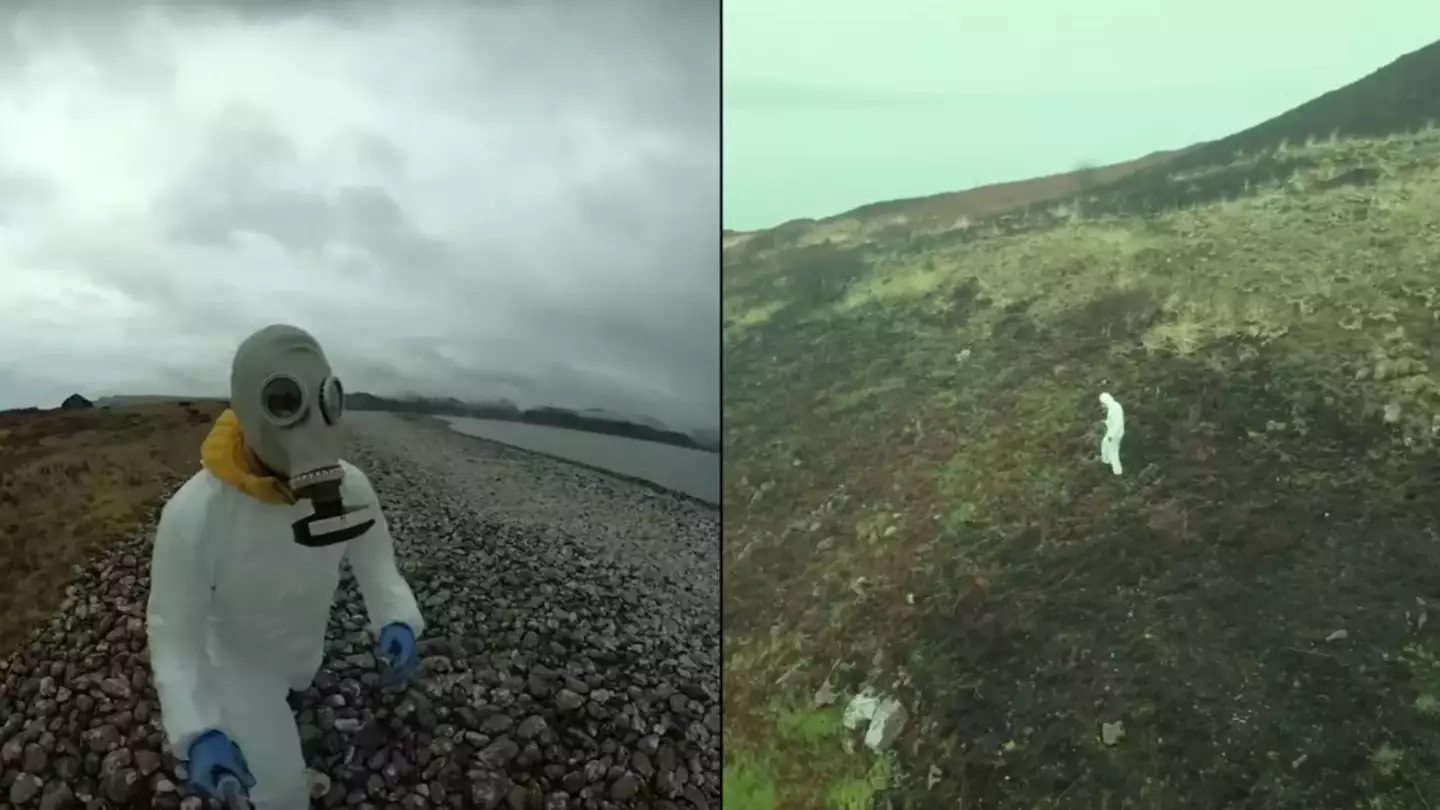
Updated 15:01 5 Sep 2024 GMT+1Published 15:00 5 Sep 2024 GMT+1
Why ‘world’s deadliest island’ that ‘kills you if you breathe’ there was banned from public
It stems from a horror event during World War II
The 'world's deadliest island' was banned from the public after a horror event over 80 years ago.
Scotland's Gruinard Bay is home to a place named Gruinard Island, located between Gairlock and Ullapool, just off the northwestern coast of Britain.
The isle has been known for decades as 'Anthrax Island' following the events of World War II, as scientists used the area as a place to carry out experiments.
But what is anthrax, and why was it cut off from the rest of the world?
.jpg)
While it primarily eats birds, the potent venom can be lethal to humans, with the possibility to kill you within just an hour.
So, it’s hardly a disappointment that people aren’t allowed to visit the place for the sake of both them and the creatures – because who wants their flesh melted by a snake?
The snakes became trapped on Quiemada Grande thousands of years ago following the end of the last ice age, as the rising sea levels disconnected the island from Brazil’s mainland.
READ MORE:
WARNING OVER TOUCHING 'CUTE' CREATURE THAT'S ACTUALLY EXTREMELY DANGEROUS
SCIENTISTS ALARMED BY FOOTAGE AFTER ATTACHING CAMERAS TO POLAR BEARS
Authorities only let a small handful of scientists visit Snake Island a year but a 9 News reporter was previously given unprecedented access for 60 Minutes and was joined by a medical team.
Speaking to news.com.au, Tara Brown said she was warned not to go by local fishermen.
She said: "When we're speaking to local fisherman, they told us, 'That's not a good idea, you don't want to go there'. There are legends about a whole family being killed there, and of pirates burying treasure on the island and the snakes being put there to protect the treasure.
 9 News
9 News"The fishermen said they never went there, or they would die."
As the years have gone by, the venom of the snakes there has actually evolved to be even more deadly.
Brown explained: "They're different to their mainland cousins in that they're five times more venomous and they are among the top 10 most poisonous snakes in the world.
"They hunt and eat birds. Not the local birds, who have become too smart for them, but larger migratory birds, boobies, who come by on their migration. And the snakes' venom has become more potent because their prey is bigger.
"It's an incredibly interesting evolutionary experiment for scientists to observe. This is a laboratory in the wild, if you like. You see evolution at play."
Yep, sure, sounds very interesting but I don’t think I’d be stepping foot near them.

Updated 15:01 5 Sep 2024 GMT+1Published 15:00 5 Sep 2024 GMT+1
Why ‘world’s deadliest island’ that ‘kills you if you breathe’ there was banned from public
It stems from a horror event during World War II
The 'world's deadliest island' was banned from the public after a horror event over 80 years ago.
Scotland's Gruinard Bay is home to a place named Gruinard Island, located between Gairlock and Ullapool, just off the northwestern coast of Britain.
The isle has been known for decades as 'Anthrax Island' following the events of World War II, as scientists used the area as a place to carry out experiments.
But what is anthrax, and why was it cut off from the rest of the world?
.jpg)
A man visited the island to see how dangerous it really was (YouTube/DaraTah)
A man made it his mission to visit the island, spending 24 hours on its shores as part of a YouTube video to see what it was really like.
Content creator Dara Tah made his way to Gruinard Island with his friend Matt James to test soil samples, with the goal of figuring out whether it was as toxic as people say.
But there are areas in the world where experiments took place over the mid-20th century, so there is the question over what makes this place so different.
To ensure maximum safety, the two visitors wore hazmat suits before hopping off a boat and making camp, with Tah explaining: “There seems to be absolutely nothing on the island, everything is just burnt.”
“I can’t see a single bit of wildlife. I’m only seeing skulls, there is no living wildlife here,” he noted.
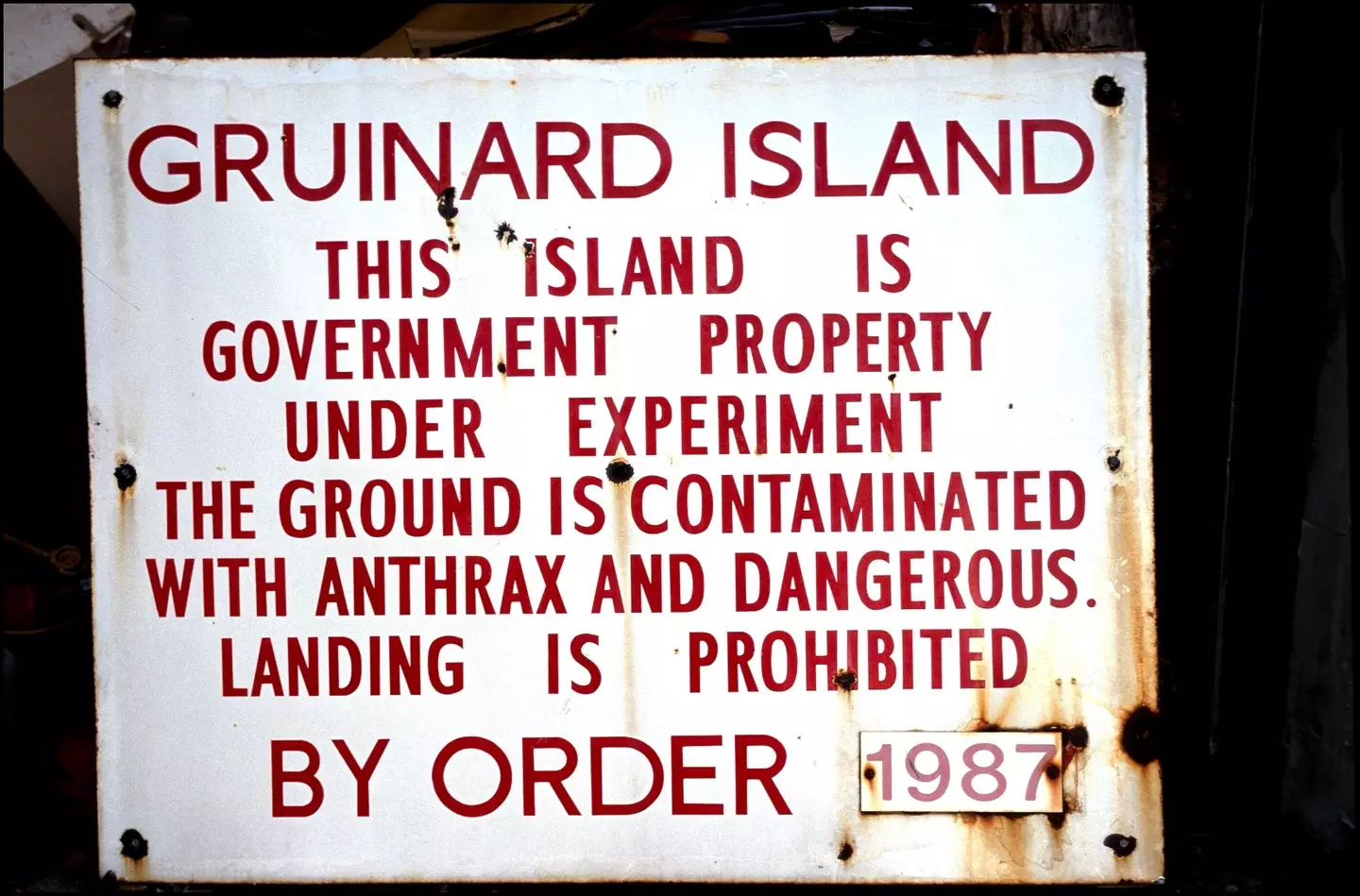 Thee Ministry of Supply previously recognised the island as contaminated (Chip HIRES/Gamma-Rapho via Getty Images)
Thee Ministry of Supply previously recognised the island as contaminated (Chip HIRES/Gamma-Rapho via Getty Images)
Following the second World War, the island was rendered deadly and uninhabitable, following a 1942 test that set of anthrax spore bombs - anthrax is a serious disease that is normally caused by Bacillus anthracis bacteria.
This type of bacteria is said to be rare and deadly, and mainly affects livestock and wild game, according to the Mayo Clinic.
It was so bad in fact, that in 1945, the Ministry of Supply recognised the island as contaminated, stating that it was too hazardous for humans to visit, thus prohibiting people from stepping on its shores for the foreseeable future.
Activist group 'Dark Harvest Commandos' were the ones that uncovered the secret experiments done on the island in 1981, when it became public knowledge that the soil was severely contaminated on the British isle.
But in 2022, a decontamination effort was put into place, where the island was burnt from 'one end to the other' in a vicious wildfire, aiming to kill all traces of anthrax.
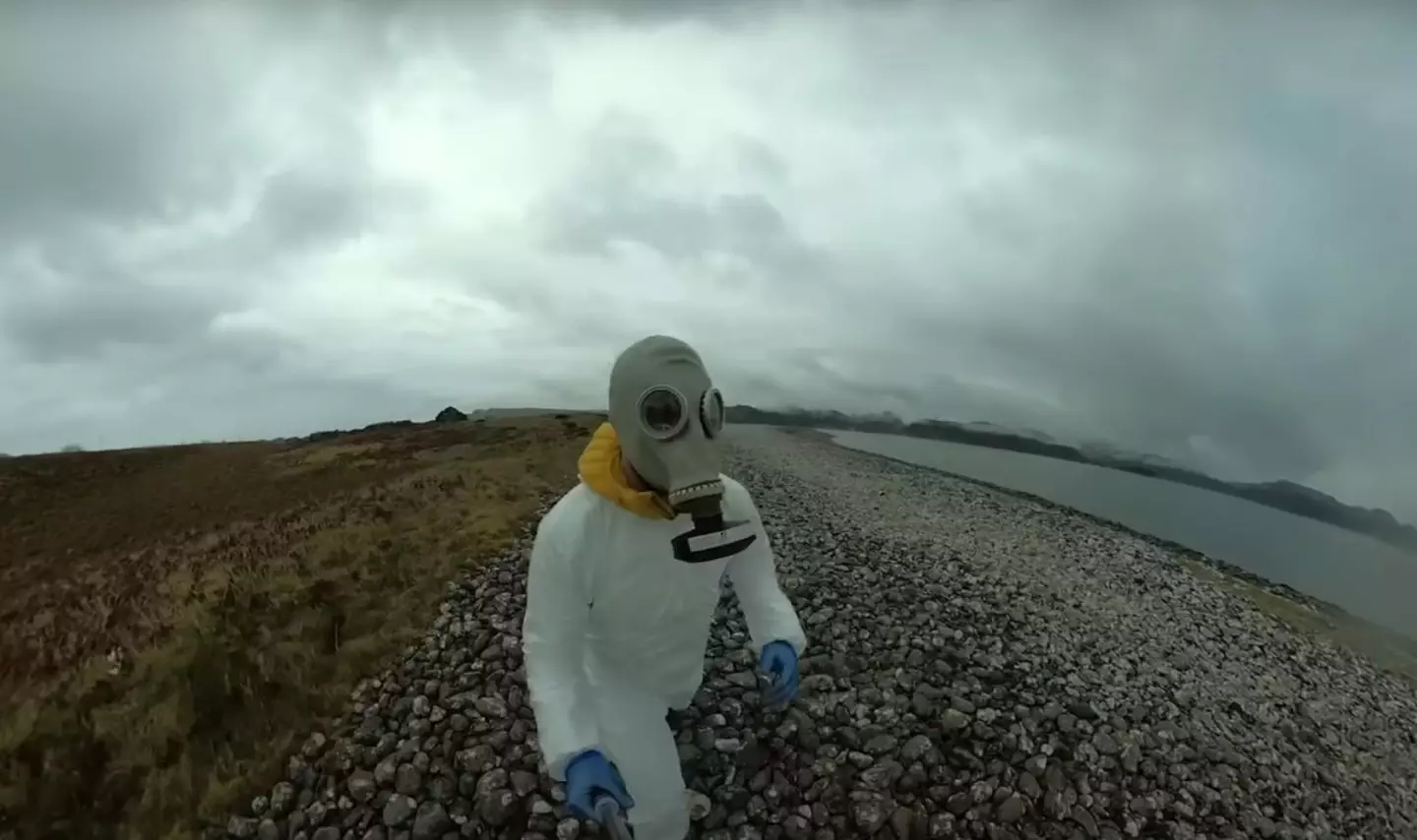
A man made it his mission to visit the island, spending 24 hours on its shores as part of a YouTube video to see what it was really like.
Content creator Dara Tah made his way to Gruinard Island with his friend Matt James to test soil samples, with the goal of figuring out whether it was as toxic as people say.
But there are areas in the world where experiments took place over the mid-20th century, so there is the question over what makes this place so different.
To ensure maximum safety, the two visitors wore hazmat suits before hopping off a boat and making camp, with Tah explaining: “There seems to be absolutely nothing on the island, everything is just burnt.”
“I can’t see a single bit of wildlife. I’m only seeing skulls, there is no living wildlife here,” he noted.
 Thee Ministry of Supply previously recognised the island as contaminated (Chip HIRES/Gamma-Rapho via Getty Images)
Thee Ministry of Supply previously recognised the island as contaminated (Chip HIRES/Gamma-Rapho via Getty Images)Following the second World War, the island was rendered deadly and uninhabitable, following a 1942 test that set of anthrax spore bombs - anthrax is a serious disease that is normally caused by Bacillus anthracis bacteria.
This type of bacteria is said to be rare and deadly, and mainly affects livestock and wild game, according to the Mayo Clinic.
It was so bad in fact, that in 1945, the Ministry of Supply recognised the island as contaminated, stating that it was too hazardous for humans to visit, thus prohibiting people from stepping on its shores for the foreseeable future.
Activist group 'Dark Harvest Commandos' were the ones that uncovered the secret experiments done on the island in 1981, when it became public knowledge that the soil was severely contaminated on the British isle.
But in 2022, a decontamination effort was put into place, where the island was burnt from 'one end to the other' in a vicious wildfire, aiming to kill all traces of anthrax.

A YouTuber and his friend spent 24 hours on the 'deadly' island (YouTube/DaraTah)
So that's the main reason behind Tah's visit, as the pair aimed to take soil samples on the island to see if the deadly anthrax spores were still present.
He aimed to find out what the 'government were hiding' following the fire.
They then explored the island, looking for different location to test for any presence of anthrax, eventually getting ten soil samples together, before sending them to a lab for further testing before staying in their tent, overnight.
While waiting to be picked up from the island, he confessed: “I was beginning to question whether coming to the island was too reckless.
"But thinking about what we’d learned so far it was clear someone needed to get answers and it might as well be me."
Play
One week later, their results were sent via email, and Tah opened them on a call with some friends, and read out their findings.
“Anthrax island is Anthrax free, Bacillus anthracis not found,” he read directly from a sample test report.
“That’s so weird I can’t believe it! It’s done, they burnt it all away.”
It is said that in 1990, the heirs of the original island purchased it from the British government for just £500.
After the controversial fire in 2022, a spokesperson on behalf of their estate told The Scotsman: "It hasn't caused any damage. It has done good. The island was totally impenetrable and the sea eagles killed any wildlife there.
"In around two months, there will be green shoots. It will certainly have done the island a lot of good. It didn't go out of control. It looked dramatic.”
So that's the main reason behind Tah's visit, as the pair aimed to take soil samples on the island to see if the deadly anthrax spores were still present.
He aimed to find out what the 'government were hiding' following the fire.
They then explored the island, looking for different location to test for any presence of anthrax, eventually getting ten soil samples together, before sending them to a lab for further testing before staying in their tent, overnight.
While waiting to be picked up from the island, he confessed: “I was beginning to question whether coming to the island was too reckless.
"But thinking about what we’d learned so far it was clear someone needed to get answers and it might as well be me."
Play
One week later, their results were sent via email, and Tah opened them on a call with some friends, and read out their findings.
“Anthrax island is Anthrax free, Bacillus anthracis not found,” he read directly from a sample test report.
“That’s so weird I can’t believe it! It’s done, they burnt it all away.”
It is said that in 1990, the heirs of the original island purchased it from the British government for just £500.
After the controversial fire in 2022, a spokesperson on behalf of their estate told The Scotsman: "It hasn't caused any damage. It has done good. The island was totally impenetrable and the sea eagles killed any wildlife there.
"In around two months, there will be green shoots. It will certainly have done the island a lot of good. It didn't go out of control. It looked dramatic.”







